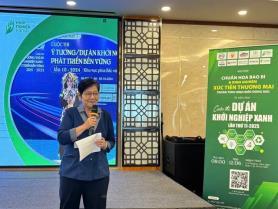FortiGuard Labs’ second half 2023 Global Threat Landscape Report showed that Việt Nam's cybersecurity landscape is under siege and how companies need to address key vulnerabilities and weaknesses in face of faster than ever threats.

Fortinet, the global cybersecurity leader driving the convergence of networking and security, has reported a snapshot of the active threat landscape and highlighted cyber trends over the second half of last year.
The FortiGuard Labs's second half 2023 Global Threat Landscape Report analysed the speed with which cyber attackers are capitalising on newly identified weaknesses across the cybersecurity industry and the rise of targeted ransomware and wiper activity.
Key findings include attacks starting on average 4.76 days after new exploits were publicly disclosed and attackers increasing the speed with which they capitalised on newly publicised vulnerabilities, 43 per cent faster than the first half.
Some N-Day vulnerabilities remain unpatched for more than 15 years. It’s not just newly identified vulnerabilities that CISOs and security teams must worry about.
Less than nine per cent of all known endpoint vulnerabilities were targeted by attacks. Research found that 0.7 per cent of all CVEs (Common Vulnerabilities and Exposures) observed on endpoints are actually under attack, revealing a much smaller active attack surface for security teams to focus on and prioritise.
About 44 per cent of all ransomware and wiper samples targeted the industrial sectors.
Botnets showed incredible resiliency, taking on average 85 days for command and control (C2) communications to cease after first detection.
Thirty eight of the 143 advanced persistent threat (APT) groups listed by MITRE were observed to be active during second half of 2023.
The report also includes findings from FortiRecon, which gave an insight into the discourse between threat actors on dark web forums, marketplaces, Telegram channels and other sources.

"The second half 2023 Global Threat Landscape Report from FortiGuard Labs underscores the speed at which threat actors are exploiting newly disclosed vulnerabilities," said Rashish Pandey, Vice President of Marketing and Communications, Asia & ANZ.
"In this environment, both vendors and customers play crucial roles, particularly in Southeast Asia. Vendors must ensure robust security throughout the product lifecycle and maintain transparency in vulnerability disclosures.
"As cybersecurity threats become more sophisticated, adopting a platform-centric approach, powered by AI, is vital. This approach consolidates security tools, enhances operational efficiency, and enables rapid adaptation to emerging threats, helping organisations to build resilient and future-proof cybersecurity defences."
Nguyễn Gia Đức, Country Manager, Fortinet Việt Nam said: “Việt Nam's cybersecurity landscape is under siege by a rapidly evolving threat scene.
"Cybercriminals are exploiting new vulnerabilities faster, highlighting the urgent need for a more robust defense strategy. Fortinet's latest Threat Landscape Report underscores the critical role of both vendors and organisations.
"Vendors must prioritise responsible vulnerability disclosure and lifecycle security, while organisations need to embrace a platform-centric approach powered by AI."
He added that Fortinet's convergence of networking and security platform delivers comprehensive protection, automated vulnerability management and streamlined operations that Vietnamese organisations, businesses need to stay ahead of the curve.
"This integrated solution reduces cost complexity, empowering organisations and businesses to adapt quickly to emerging threats, building a more resilient and future-proof security posture.” — VNS





